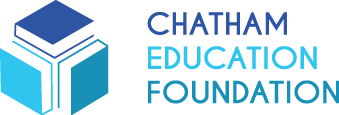Reading is fundamental to the success of all students. It is the most critical academic skill because it sets the foundation for all learning. Without a strong foundation in reading, children can be left behind at the beginning of their education.
According to Nationwide Children’s, “Language and literacy develop together as a baby grows from an infant, to a toddler, to a school-aged child and older. This development happens in an expected order, through social interactions, most often with parents and caregivers. The key to development is that interaction. Babies’ and toddlers’ brains grow quickly, and the first three years are critical for language development.”
The first three years of exploring and playing with books, being read to, singing songs, recognizing words and objects, and coloring/drawing are the building blocks for language and literacy development.
As described by UCONN, “Young children who experience rich language environments have greater oral language skills; for example, vocabulary knowledge and listening comprehension, as well as, phonemic awareness. Parents and guardians can support children’s development of oral vocabulary and print awareness through organic conversations and shared reading activities while a strong preschool literacy program provides instruction in more specific knowledge like the alphabetic principle and concepts of print.”
According to Zero to Three, the following are age-appropriate recommendations for what children like in books:
Infants 0-6 months
• Books with simple, large pictures or designs with bright colors.
• Stiff cardboard, “chunky” books, or fold out books that can be propped up in the crib.
• Cloth and soft vinyl books with simple pictures of people or familiar objects that can go in the bath or get washed.
Infants 6-12 months
• Board books with photos of other babies.
• Brightly colored “chunky” board books to touch and taste!
• Books with photos of familiar objects like balls and bottles.
• Books with sturdy pages that can be propped up or spread out in the crib or on a blanket.
• Plastic/vinyl books for bath time.
• Washable cloth books to cuddle and mouth.
• Small plastic photo albums of family and friends.
Young Toddlers 12-24 months
• Sturdy board books that they can carry.
• Books with photos of children doing familiar things like sleeping or playing.
• Goodnight books for bedtime.
• Books about saying hello and good-bye.
• Books with only a few words on each page.
• Books with simple rhymes or predictable text.
• Animal books of all sizes and shapes.
Toddlers 2-3 years
• Books that tell simple stories.
• Simple rhyming books that they can memorize.
• Bedtime books.
• Books about counting, the alphabet, shapes, or sizes.
• Animal books, vehicle books, books about playtime.
• Books with their favorite TV characters inside.
• Books about saying hello and good-bye.
Parents who cultivate a love of reading at a young age give their children the foundation they need to build strong literacy skills. These skills are crucial for their academic success.
“The more that you read, the more things you will know. The more that you learn, the more places you’ll go.” -Dr. Suess
